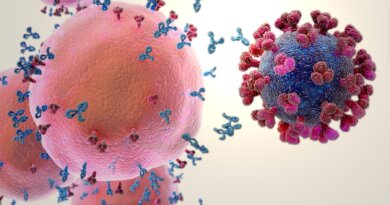Biosimilars May Finally Stop the Rocketing Cost of Insulin
Oct. 26, 2022 – Trapper Haskins, a 45-year-old musician with type 1 diabetes, says the price of insulin is a constant stressor in his life. The Nashville resident takes two types of insulin daily and sometimes must ration the medicine because his insurance plan caps how much of the pricey drug he can receive each month. Insulin “isn’t like a high blood pressure medication,” he says. “Some days you need more, and then you get to the end of the month and you’re afraid you’ll run out.”
Research shows that among people with type 1 and type 2 diabetes, about one in four must ration their supplies due to cost. In general, most people with diabetes need two or three vials of insulin a month. Each vial can cost hundreds of dollars, meaning patients’ costs could easily reach $1,000 a month.
“The price of insulin has tripled in the last 10 years, and it’s creating a national crisis,” says Lizheng Shi, PhD, a professor of health policy at Tulane University in New Orleans. .
There are 1.5 million people with type 1 diabetes in the U.S. who can’t buy their own insulin and are entirely dependent on it to keep their blood sugar in a safe range. The vast majority of people with diabetes, some 37 million, have type 2 diabetes, which usually results in the use of blood sugar-reducing medications until insulin is introduced later on because the body no longer responds to its own.
The high cost of insulin is largely due to a lack of competition and too few makers of the current products, says Shi. One of the best hopes for more affordable insulin is to increase market competition and drive down prices with the introduction of so-called biosimilar drugs, which are highly similar versions of the original biologic medications – and typically far less expensive.
Creating Competition in the Market
In July 2021, the FDA approved the first biosimilar product that could be used interchangeably with current insulin products. Called Semglee, it’s a long-acting insulin analog and the generic form of Lantus, the world’s leading basal insulin, whose patent expired in 2016. Semglee, which is made by the drug company Mylan, is now available under some 2022 insurance plans and is approved for patients with type 1 and type 2 diabetes. But Semglee isn’t inexpensive – it’s around $133 per vial without insurance. Some versions of Lantus retail for more than $300.
The introduction of insulin biosimilars won’t bring major price cuts anytime soon, says Jing Luo, MD, an assistant professor of medicine at the University of Pittsburgh. One reason, he says, is that it takes years for drugmakers to develop the expertise and capacity to scale up production of biosimilars. Still, Luo is optimistic that we’ll get there in the next 2-3 years, and once we do, it could mean insulin would cost 10 times less.
Luo cites the work of the nonprofit Civica Rx. In March, the organization announced it would produce large-scale generic insulin in an effort to drive down cost.
The company will produce three forms of insulin to be used interchangeably with Lantus, Humalog, and Novolog. The products will be sold for no more than $30 a vial. They’ve already started building their manufacturing plant in Petersburg, VA, and will have products available for purchase by 2024, pending FDA approval.
Additionally, the state of California plans to produce its own generic insulin. The state is investing $50 million to make biosimilar insulin products and another $50 million to build a manufacturing facility.
Not Soon Enough
But for many, price cuts aren’t happening fast enough. Allison Bailey of Ames, IA, who has type 1 diabetes, says that it can feel daunting sometimes to find a way to pay, but she couldn’t survive without the life-saving medication. At times, it’s cost her up to $500 to fill her prescription. Bailey was eventually able to adjust her prescription to a less expensive insulin, but the 35-year-old graphic designer says her insurance coverage still takes up a sizable chunk of her monthly expenses.
The introduction of biosimilars has not driven down the price of insulin fast enough for patients like Bailey, says Robert A. Gabbay, MD, PhD, chief science and medical officer at the American Diabetes Association. That’s why the association is pushing legislation to bring down insulin prices. It lobbied hard to establish a $35-per-month Medicare price cap that will go into effect in 2023. Now it’s focused its efforts on expanding the caps to private insurers, a move that was voted down by Republicans in Congress as part of the Inflation Reduction Act.
“We want to see some transparency in pricing; right now, everyone just points fingers at each other and we don’t know who’s to blame,” Gabbay says.
But people with diabetes like Haskins and Bailey agree that competition from biosimilars and price caps could help bring down what they view as the exorbitant prices for medications they need. “I’m lucky I have insurance, but for those who don’t, it’s often a life-or-death situation,” says Haskins



